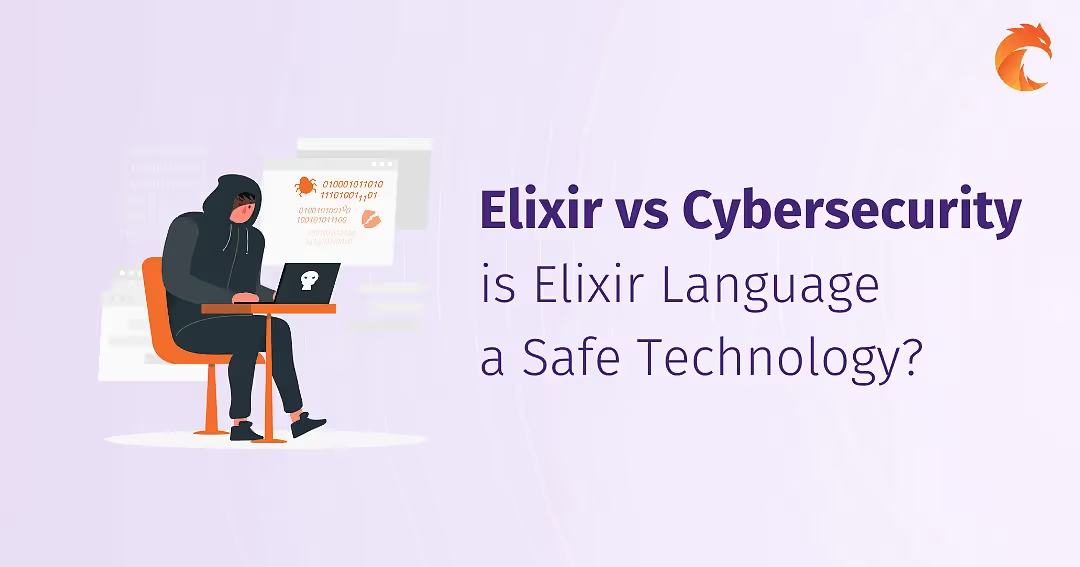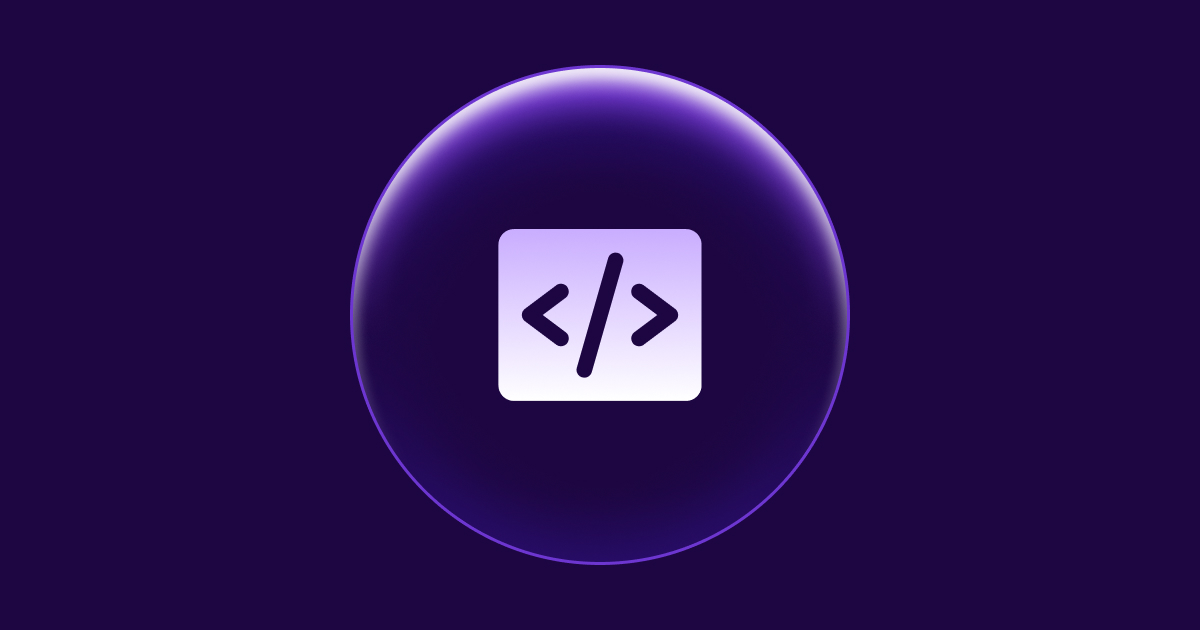Elixir vs Cybersecurity - is Elixir Language a Safe Technology?


With so much of our life going online now, it's more important than ever to understand cybersecurity - what it is, why it is crucial, and how we can protect ourselves from cyber threats. In this post, I will introduce you to the world of cybersecurity and tell you how Elixir programming language works in this environment.
What is Cybersecurity?
Cybersecurity is the practice of protecting electronic systems and data from unauthorized access or damage. This includes everything from individual computer networks to large-scale enterprise systems.
Cybersecurity measures can be as simple as installing antivirus software on a personal computer or as complex as implementing comprehensive security protocols for an entire organization.
Why is Cybersecurity Important?
As our lives become increasingly online, we become more vulnerable to cyber threats. Hackers can use our personal information for identity theft, our financial information for fraud, and our private photos and communications to blackmail.
For businesses, a successful cyber attack can result in the loss of critical data or intellectual property, financial loss, and even loss of reputation. In other words, cybersecurity is crucial for individuals, businesses, and organizations of all sizes.
Cybersecurity - Known and Unknown Threats
In the digital transformation era, awareness of various cybersecurity threats is more critical. In addition, as hackers become more sophisticated, staying one step ahead is essential.
Learn about some of the most common types of cybersecurity threats you should keep in mind.
Malware
Malware is a type of software that intentionally damages or disables computers. It can spread quickly and easily, often without the user knowing it's there.
Many types of malware include viruses, worms, trojans, and spyware. Malware can cause severe damage to your computer, including corrupting files, stealing personal information, or even taking control of your entire system.
Ransomware
Ransomware is malware that encrypts your files and demands a ransom to decrypt them. It can be devastating, especially for businesses, as it can result in losing important data.
Ransomware can be spread through email attachments or malicious websites. Once on your system, it can spread quickly and encrypt your files in minutes.
Insider threats
An internal threat is a type of cyber attack from within the organization. For example, it could be an employee who has access to sensitive data and decides to steal sensitive data. It could also be the contractor that has access to your systems and chooses to install the malware.
Insider threats can be challenging to detect and prevent because the attacker already has legitimate access to your systems.
Advanced Persistent Threats (APTs)
Advanced Persistent Threats (APTs) are a type of cyberattack carried out by well-funded and highly skilled attackers. These attacks are usually targeted at specific organizations or individuals for political reasons.
Unlike other types of attacks which generally last for just a few hours or days, APTs can go on for months or even years without being detected.
Man-in-the-middle
A man-in-the-middle attack is a cyberattack where the attacker intercepts communication between two parties to either eavesdrop on them or alter the communication. This attack is usually carried out by someone with physical access to the two parties' communication channels, such as on the same Wi-Fi network.
Man-in-the-middle attacks can be tough to detect and prevent because the attacker can silently eavesdrop on the communication without either party knowing about it.
Phishing / Social Engineering
Phishing is a cyberattack that uses fraudulent emails or websites to trick users into revealing personal information such as passwords or credit card numbers. It's one of the most common attacks, as it's relatively easy to carry out and can be very effective.
Social engineering is similar to phishing, but rather than emails or websites. Attackers will use phone calls or text messages to try and trick you into revealing personal information.
Distributed denial-of-service (DDoS) attacks
A distributed denial-of-service (DDoS) attack is a cyberattack that makes a website or server unavailable by flooding it with traffic from multiple computers.
DDoS attacks often mask other types of attacks, such as data breaches. In addition, they can be complicated to defend against because the attacker can use thousands or millions of devices to generate the traffic needed to overwhelm a website or server.
What does Cybersecurity Mean for your Business?
Protecting your and your customer's data is essential as a business owner. You may have even taken steps to protect your data, such as investing in a secure server or using strong passwords.
Cybersecurity is the practice of protecting your electronic information from theft or damage. This includes everything from your website to your customer database to your social media accounts.
Businesses of all sizes are vulnerable to cyber-attacks.
43% of cyber attacks target small businesses.
This is because small businesses often don't have the same resources as larger businesses to invest in cybersecurity measures. However, this doesn't mean that small businesses are helpless against cyber attacks. On the contrary, there are many steps that small businesses can take to protect themselves, such as investing in antivirus software and using strong passwords.
and why cybersecurity is crucial for business?
Cybersecurity is essential for businesses because it helps protect against data breaches and cyber-attacks. Data breaches can be costly for companies in terms of money and reputation. A data breach is when sensitive information, such as credit card numbers or Social Security numbers, is accessed without authorization. In the event of a data breach, businesses may be required to notify affected individuals and may be subject to fines from regulatory agencies.
Cyber attacks can also be costly for businesses in terms of money and reputation. In addition, in the event of a cyber-attack, companies may be required to shut down operations temporarily and lose customers due to a loss of trust.
Cybersecurity - Technologies and Practices
Cybersecurity is the practice of protecting electronic information by mitigating computer and network risks. In other words, it's all about preventing data breaches. And while no system is 100% foolproof, businesses can dramatically use several security solutions and practices to reduce the risk of a violation.
Identity and Access Management (IAM)
One of the most effective ways to protect against data breaches is using an identity and access management (IAM) system. IAM systems control who has access to which systems and data, making it much more difficult for unauthorized individuals to access sensitive information.
IAM systems typically involve some combination of single sign-on (SSO), role-based access control (RBAC), least privilege, and multi-factor authentication (MFA).
Security Information and Event Management (SIEM)
Security information and event management (SIEM) are critical to any comprehensive security strategy. SIEM platforms collect data from all parts of the IT critical infrastructure - including firewall logs, intrusion detection systems, application logs, and more - and then use that data to detect and respond to security threats in real time. This visibility into the system is essential for identifying and thwarting attacks before they cause severe damage.
A Comprehensive Data Security Platform
Another critical element of a strong cybersecurity posture is a comprehensive data security platform. This platform should include technologies like data encryption, activity monitoring, and user behaviour analytics. Robust security policies and procedures should also supplement it. Combined, these various elements can form a powerful barrier against even the most determined adversaries.
What is the Future of Cybersecurity?
Organizations are becoming more aware of cybersecurity's importance and taking steps to ensure that their data is safe. As a result, we can expect to see more innovation in cybersecurity in the coming years, which will only benefit everyone who relies on the internet to conduct their business.
According to data carried out by Gartner - in 2025, 60% of organizations will use cybersecurity risk as a primary determinant in conducting third-party transactions and business engagements.
This means that companies will be much more careful about who they do business with and will be likelier to deny requests from parties that they deem too risky.
Gartner believes that by 2025, 80% of enterprises will adopt a strategy to unify web, cloud services, and private application access from a single vendor's security service edge platform. This refers to the practice of using a single platform to manage all of an organization's cybersecurity needs.
A centralized approach will make it easier for organizations to keep track of their cybersecurity posture and make changes as needed.
Is Elixir a Good Programming Language for Cybersecurity?
Elixir is a functional, dynamic language that runs on the Erlang virtual machine. Many large companies, such as Pinterest and Moz, use Elixir because it has excellent scalability and fault tolerance.
While Elixir is not as widely used as other languages, it is gaining popularity in the programming community. But what about cybersecurity? Is Elixir a good language for building secure applications?
Functional Programming and Cybersecurity
Elixir is a functional programming language. This means that it focuses on producing code that is easy to reason about and understands. That can be helpful for cybersecurity because it makes it easier to find security vulnerabilities in code.
In addition, functional programming languages tend to be more resistant to errors than other types of languages. That can be important in cybersecurity because even a tiny mistake can have significant consequences in terms of security.
Concurrency and Cybersecurity
Elixir also has good support for concurrency. Concurrency is the ability to run multiple tasks at the same time. For example, concurrency can be vital in cybersecurity because it allows you to run various security scans simultaneously without slowing down your system. Additionally, concurrent processes are isolated from each other, which can help contain any damage if one method is compromised.
Fault Tolerance and Cybersecurity
Another advantage of Elixir is its fault tolerance. Fault tolerance is the ability of a system to keep running even if part of the system fails. In cybersecurity, fault tolerance is essential because it helps ensure that your system will keep running even if there is an attack or other security breach.
Elixir language seems to have many features that suit it well for cybersecurity applications. Despite being a relatively new language, it has features that keep your application secure, such as functional programming, concurrency, and fault tolerance. Therefore, if you are looking for a language to build a specific application, Elixir should be on your shortlist!
Want to power your product with Elixir? We’ve got you covered.
Related posts
Dive deeper into this topic with these related posts
You might also like
Discover more content from this category
Elixir is a pretty capable language - and it consistently ranks near the top of most loved and wanted languages rankings.
It can be tough to find Elixir developers. They're a rare breed and love the language so much that they're often hard to pull away from their current projects. So, what to do, if you're looking to add Elixir development capabilities to your business?
Every application contains bugs, and even if it doesn't, it will.






